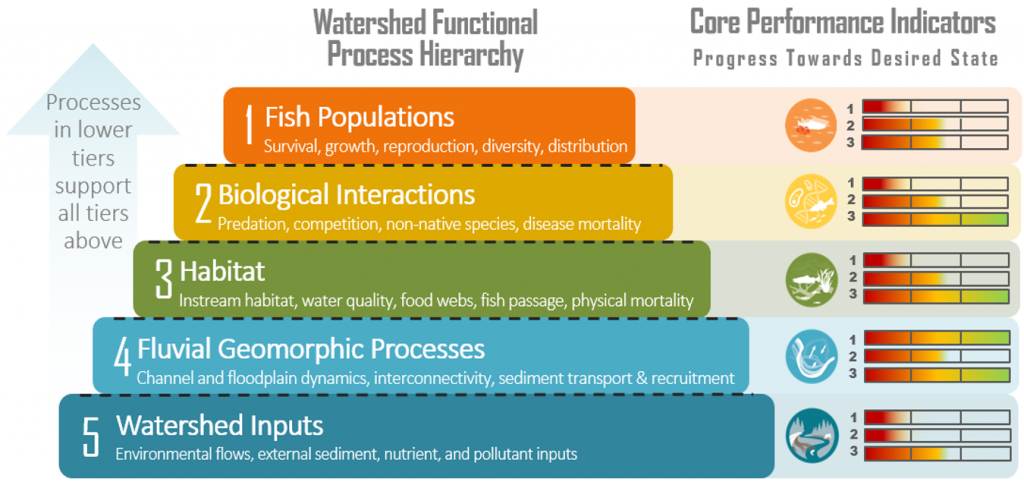The state of the science in river restoration ecology increasingly calls for more holistic approaches to restoration at the basin scale. Contemporary approaches seek to address multiple root causes of ecosystem degradation by emphasizing restoration of landscape-scale ecological processes and functions rather than the traditional focus on the resulting symptoms for individual sites and species.
This approach recognizes the inherent hierarchical nature of watershed processes, whereby improvements in underlying hydrogeomorphic and biogeochemical processes are expected to yield cascading benefits across more localized channel, habitat, and population processes. This concept is illustrated in a hierarchical pyramid of watershed functional processes which has been adapted from a similar one outlined by the EPA in their 2012 guidance document on a Function-Based Framework for Stream Assessment and Restoration.

It is important to understand that natural systems often recover slowly, and that there will be a time lag between the successful restoration of underlying watershed processes and the benefits of these actions at higher levels of organization. Thus, many of these goals and objectives, particularly higher-order goals and objectives related to fish populations, may take many decades to achieve. In some cases, this may extend to several decades after the supporting watershed processes are sufficiently restored. For this reason, the IFRMP designated Core Performance Indicators (CPIs) that track overall progress towards the desired state of the system within each watershed tier rather than measuring success against a small subset of discrete indicators and benchmarks at higher biological tiers.
Participants new to the IFRMP approach to prioritization are encouraged to review the overview presentation on methods available here.





